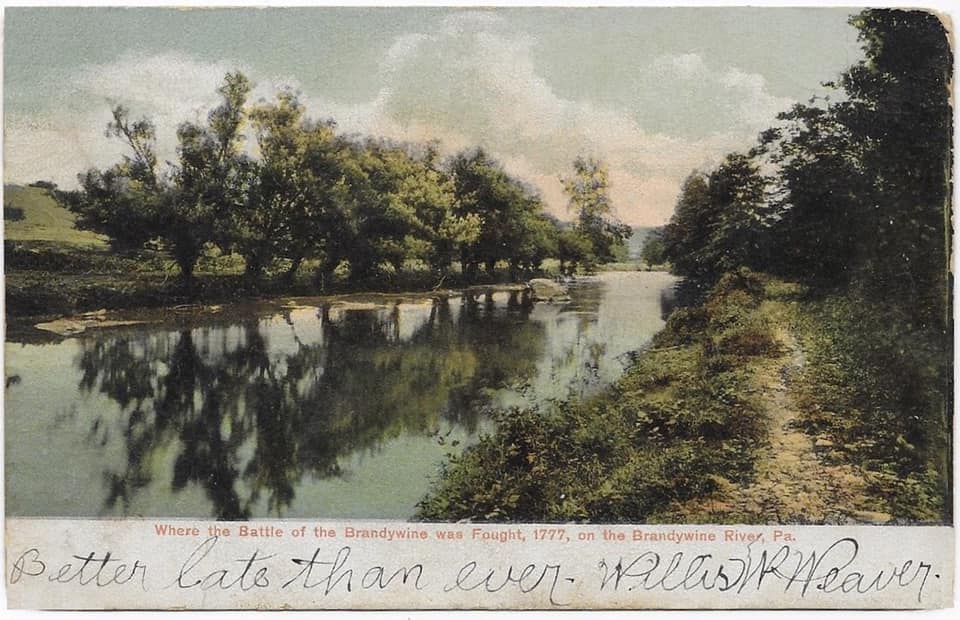The Terrible Battle of September 11 – Chadd’s Ford, PA
At the time of the American Revolution, Philadelphia was the largest and most prosperous city in Colonial America.
William Penn’s commitment to treaties and peaceful relations with the native tribes permitted the interior of Pennsylvania to be settled and developed more rapidly than many other colonies. (One of the earliest examples of the “peace dividend”.)
As the center of the nascent rebellion, Philadelphia was also a target of the British army.
In August of 1777, a British fleet carried the army of General Howe from the occupied city of New York on a difficult journey of 34 days to a landing in the Chesapeake Bay near Elkton, Maryland.
The British army moved northward through Newark, Delaware, and into southern Pennsylvania.
Washington and the Continental army dug in on the Brandywine Creek near the Christiana River.
A lack of scouting information concealed the British maneuvers, so that when fighting broke out on the morning of September 11, the Continental army was surprised by attacks on its flanks.
The Battle of Brandywine was the largest engagement of troops in the Revolutionary War, and it was a massive rout of the Continental Army.
After 18 hours of fighting, Washington and the army was able to retreat – aided by the defensive strategies of Polish General Pulaski and the young Marquis de Layfayette.
The British proceeded, after days of skirmishes at Paoli and other places, to occupy Philadelphia.
Having fled Philadelphia, the Continental Congress re-convened in Lancaster, PA, and then moved to safer quarters across the Susquehanna River in York, PA.
Military equipment and supplies not captured by the British were hidden in Reading, PA.
The great positive outcome of this dreadful day for the Continental army was that General Howe was incapable of returning to New York State where he was due to join forces with General Burgoyne.
The surrender of General Burgoyne and a large British force at the Battle of Saratoga within a month (October 7, 1777) proved to be a turning point in the battle for independence.
This postcard photograph of the Brandywine Creek was mailed to Miss Ruth Kreider of Ronks, PA in January of 1905.
It may have been near Ruth’s birthday, or perhaps it was a delayed exchange of postcards.
The sender, Willis W. Weaver, writes on the face, “Better late than ever (sic)”.
Neither Miss Kreider nor Mr. Weaver could have foreseen how the date of September 11 would be remembered more than a hundred years later.





